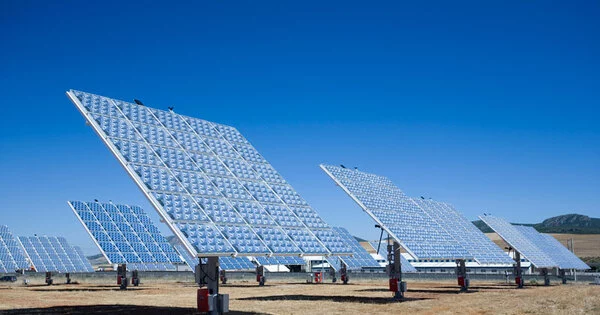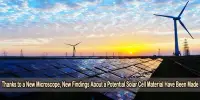Concentrator photovoltaics (CPV) is a photovoltaic technology that uses sunlight to generate electricity. It is a technology that concentrates sunlight onto high-efficiency solar cells to increase the efficiency of solar energy conversion. Unlike traditional photovoltaic systems, it focuses sunlight through lenses or curved mirrors onto small, highly efficient multi-junction (MJ) solar cells. Furthermore, to increase efficiency, CPV systems frequently employ solar trackers and, in some cases, a cooling system.
Unlike traditional flat-plate photovoltaic systems, which capture sunlight over a large area, CPV systems concentrate sunlight onto smaller, more efficient solar cells via optical devices such as lenses or mirrors. High-concentration photovoltaic systems have the highest efficiency of any existing PV technology, achieving close to 40% for production modules and 30% for systems. They allow for a smaller photovoltaic array, which has the potential to reduce land use, waste heat and material, and system balance costs.
The basic principle of CPV is to focus sunlight through optical elements onto tiny, highly efficient solar cells, such as multi-junction solar cells. Multi-junction cells can convert a wider spectrum of light into electricity than conventional silicon solar cells, making them suitable for CPV systems.
Key components of a concentrator photovoltaic system include:
- Optical Concentrators: These devices focus sunlight on a small area, increasing the amount of light that reaches the solar cell. Lenses and mirrors are the two main types of optical concentrators. In Fresnel lens-based CPV systems, lenses are typically used, whereas mirrors are commonly used in dish or parabolic trough-based CPV systems.
- High-Efficiency Solar Cells: High-efficiency solar cells, such as III-V multi-junction solar cells, are used in CPV systems. These cells, which are made of various semiconductor materials, have higher conversion efficiencies than traditional silicon solar cells.
Benefits of Concentrator Photovoltaics:
- High Efficiency: CPV systems can achieve higher efficiency than traditional flat-plate solar panels, as they focus more sunlight onto smaller, high-efficiency solar cells.
- Space-Efficient: The use of smaller solar cells means that CPV systems require less land area for the same electricity output.
- Lower Material Costs: Since CPV systems use smaller solar cells and require fewer raw materials, the cost per watt of electricity generated can be lower than traditional photovoltaic systems.
- Less Energy Loss: CPV systems can be designed with better heat dissipation, reducing the thermal losses often experienced by traditional solar panels.
However, there are some challenges and considerations associated with CPV technology, including:
- Direct Sunlight Requirement: CPV systems need direct sunlight to function optimally. Cloudy or shaded conditions can significantly reduce their efficiency.
- Reliability: The optical components used in CPV systems need to be robust and reliable to withstand environmental conditions.
- Cost: While CPV technology has the potential for higher efficiency, it has historically been more expensive to manufacture and install compared to traditional solar panels. Cost reduction efforts and advancements in technology are continuously improving the economics of CPV.
















